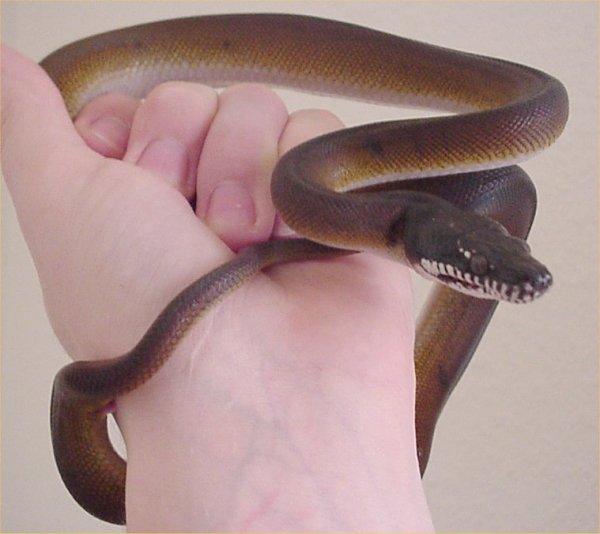Type the name of the breed you're looking for below
[wpdreams_ajaxsearchlite] Don't see the breed your're looking for? Click here and let us know!
White-Lipped Python
| Place of Origin and Range | These snakes are found in most of New Guinea (below 1200m or 3,940ft), including the islands of Salawati and Biak, Normanby, Mussau and Emirau, as well as a few islands in the Torres Strait. |
| Description | They are patternless, except the northern white-lipped python has some light markings which are absent in the southern white-lipped python. The snout is triangular and the head is distinct from the neck. The back of the head is shiny black, the upper and lower labial scales are white with black markings on the anterior edge of the scales. Body colour is either brownish-violet fading to yellowish ventrally or blackish-blue fading to grey. |
| Morph Patterns Available | Yes |
| Adult Size | Can grow up to 10feet(3m) |
| Accommodation | Associated with rain forests, clearings and swamps, they are usually found near water, into which they may quickly retreat if disturbed. They often hide under dead leaves on forest floor. Plenty of branches for climbing. Leafy plants will provide the required humidity and hides. You will always want to include a large dish for bathing and soaking in to improve shedding. Always include a day basking spot at 80'F(27'C). Along with multiple hides. Minimum 2 x 2 x 4 feet for an adult. |
| Lifespan | Can live 15+ years |
| Feeding / Diet | The diet includes a range of small to medium-sized birds and mammals. Juveniles often feed on lizards. |
| Breeding | The oviparous females lay about a dozen eggs. The eggs stick together in a compact pile, and the females coils around them. The hatchlings emerge after about two months of incubation and are about 38 cm (15 inches) in length. |
| Other Considerations | Snakes are relatively hardy low maintenance animals when kept in the correct environment, and require little day to day care other than feeding and cleaning out the tank as required. However, like all animals, they can still become sick or injured despite our best intentions to prevent this. |



